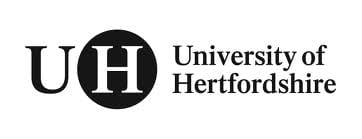Organization: exponential Design Lab Short name: eDL
General Description
eDL is a design, city planning, architecture, industrial, system and product design, project management and space architecture organization composed of engineers and architects. In its actual form founded in 2007 in Montevi- deo, Uruguay. It is active in advanced projects in energy conservation, power generation in buildings, vertical agriculture, decontamination systems, and advanced product ecosystems. Its capabilities include: Architectural, interior, structural, urban design; Graphic design, rendering, animation, Vehicle design, Product , system and in- dustrial design, Concept design, preliminary design and final engineering (drawings and specifications), Cost estimates and scheduling; Scheduling, Purchasing, Expediting, Project and construction management, Prototyp- ing support, Quality control, Final tests and delivery, Marketing support implementation.
Main related expertise
Arch Giorgio Gaviraghi, President and founder of eDL in the year 2007. Over 40 years of active experience as designer,projectmanagerandgeneralmanagerofdesignandconstructionorganizations. Involvedinaerospacefacility design as project manager for the Austin Company (Boeing Aeritalia, commercial wide body assembly facilities) HAI-Lockheed Westinghouse commercial and military aircraft overhauling facility in Tanagra Greece) and air- port design as responsible of Group 2A (Alitalia-Austin). For MLA New York, the Strategic Defense Initiative (SDI) program, designed an electromagnetic (rail gun) testing facility in Picatinny NJ US Army. Co designer of Euro Mars, Martian simulated base, Bidu Guiday Lunar base and city and several aerospace projects. Tutor of groups of high school and university students in space related projects, sponsored by NASA and similar organi- zations, and winning over 10 awards in three years , Space settlement design, Mars city, advanced aircraft, Ras- cal finalist with a lunar city project, is familiar with new and advanced concepts in space related or high tech proposals. Project management experience in major projects, (housing repair and rebuilding in seismic damaged zone), pharmaceutical, food, aerospace facilities, airport design. Vehicle design, urban car system, boats and air- planes interiors. Presented over twenty papers at space conventions , NSS; Mars Society, AIAA, ESA and others. Author science fiction book ̳First Contact‘ Minerva Press London 2000. Member of the board Lifeboat Founda- tion.
Arch Maria Adela Gimenez, University professor and eDL co founder. Over 20 years experience in city plan- ning and advanced building design ( energy conservation, power generation from renewable, hydroponic agricul- ture and other systems. Professor at UTU Universidad del Trabajo in Montevideo. Co tutor of high school and university students for winning space related projects.
Prof. Renzo Ghio, professor of renewable power systems, electronics and information technology at UTU Universidad del Trabajo Montevideo. Over 20 years experience in advanced design and systems.


